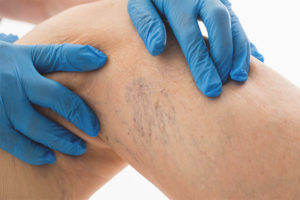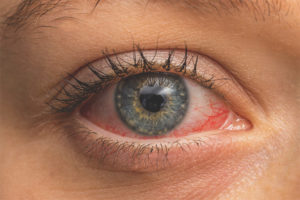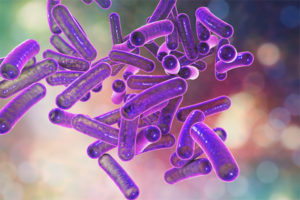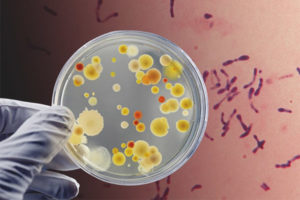The content of the article
Why know about the various signs of a disease, if the doctor is still involved in the diagnosis and treatment? This is an erroneous, and sometimes dangerous misconception. Each of us must carefully monitor our body, its smallest changes and manifestations. This will allow you to recognize the symptoms of the disease at an early stage of its development, turn to the right (narrow) specialist in time, and receive more effective treatment. Today we’ll talk about the pancreas - what kind of organ it is, what functions it performs, and also consider the main signs of pancreatic malfunction and diseases associated with this organ.
Pancreas
This is a small organ, measuring 15-20 cm, which is located under the stomach. The organ plays a huge role in the digestion process. It performs two important functions - the production of enzymes and hormones. Enzymes are essential for the body to break down foods into proteins, fats, and carbohydrates. The pancreas allows all nutrients to be absorbed into the walls of the stomach and intestines. In addition, the pancreas performs an endocrine function and produces insulin, which regulates blood sugar levels.
It is quite difficult to feel the pancreas, therefore, to diagnose its condition, use examination, blood and urine tests, as well as ultrasound. Ultrasound of a healthy organ will show even and clear contours, uniform structure and density. Treatment of a diseased pancreas is a rather long and difficult matter, therefore, it is necessary to conduct ultrasound of the abdominal cavity in a timely manner. But what symptoms may indicate a malfunction of the pancreas?
Symptoms of pancreatic disease
Many diseases of the gastrointestinal tract and pancreas have similar symptoms. However, a closer look at the signs of the disease may differ.
- Disorders in the pancreas first of all are manifested by various problems with the stool. The patient may experience constipation, which is replaced by diarrhea, flatulence, bloating. This is due to a disturbed supply of laxative enzymes that are produced by the pancreas.
- One of the most common manifestations of pancreatic disease is pain in the abdomen. The pancreas has many nerve endings that respond to stretching and or squeezing an organ. The pain can be dull or acute, obvious or minor depending on the specific disease. Most often, the pain is localized near the navel, it can be on the right or left, depending on which part of the pancreas is affected. The pain may intensify after eating or not depend on it.
- The more the pancreas is affected, the more pain is manifested. In some cases, it can be localized in the chest and even the collarbone. In this situation, it is very important to exclude heart disease. In some cases, the pain can be so severe (with pancreatic necrosis) that it can even lead to death.
- Pancreatic diseases are accompanied by nausea and vomiting. Symptoms are worse after eating fatty, spicy, salty, or smoked foods. In addition, nausea and vomiting can aggravate when taking certain medications, during stressful situations, while drinking alcohol, when consuming cold fatty foods, etc. Vomiting develops rapidly; its peculiarity is that it does not bring the desired relief, as during food poisoning.During vomiting, first the entire contents of the stomach are excreted, and then the vomit consists of bile.
- Frequent vomiting can lead to dehydration. At first, this is manifested by increased thirst, dry skin, and rare urination. More serious degrees of dehydration can be extremely dangerous, especially for children.
- With pancreatitis (one of the diseases of the pancreas), the bile duct becomes constricted. Because of this, the skin may acquire a special yellowish tint.
- In some cases, symptoms of the pancreas can be indicated by symptoms such as cyanosis of the nasolabial triangle and fingers, and pallor of the face. In some cases, blue-yellow spots may appear on the abdomen on either side of the navel. This is due to impaired circulation in the abdominal cavity.
If you encounter one or more of these symptoms, you should consult a doctor as soon as possible.
How to recognize a pancreatic disease
To verify suspected pancreatic disease is possible by palpation of the abdominal cavity. Typically, the following techniques are performed by a doctor, but with sufficient knowledge they can be carried out at home.
- Try to feel the left rib-vertebral angle. It is located just below the left rib and with inflammation brings serious pain.
- Place two fingers just below the navel, about a couple of centimeters. Press lightly and move to the side and up. When pressed, the patient with pancreatitis will feel acute pain.
- Measure from the navel about 7-8 cm upwards, approximately the width of the palm. Tap in the area with the palm of your hand in jerks. In diseases of the pancreas, pain is inevitable.
A more accurate location of painful nodes will help determine the doctor. If you suspect a pancreatic disease, you need to seek help as soon as possible. But what can cause this condition?
Pancreatic disease
Depending on the causes of disturbances in the pancreas, several major diseases of this organ can be identified.
- Pancreatitis This is an inflammation of the pancreas, one of the most common diseases of this organ. Pancreatitis develops due to a violation of the outflow of enzymes and digestive juice from the gland to the small intestine. Enzymes that do not find a way out destroy the tissues of the gland itself and nearby organs. Most often, the disease proceeds against the background of malnutrition, high consumption of fatty, salty and fried foods. Pancreatitis can be acute or chronic depending on the form of the course of the disease. Most often, the pain bothers in acute periods, giving back to the spine, in some cases the pain is girdle-like. If you eat the wrong and dangerous foods, nausea and vomiting intensify.
- Pancreas cancer. This is a neoplasm in the region of an organ that has a malignant nature. Most often, cancer develops against the background of other diseases of the pancreas. The pain can be aching, for a long time or sharp, as in acute pancreatitis. Standard vomiting and nausea in this case is accompanied by severe bloating, weight loss, decreased appetite, and severe exhaustion of the body. The skin becomes yellow or especially pale.
- Cystic fibrosis. This is a hereditary disease that is transmitted genetically. The disease can affect the respiratory system, digestive system, endocrine glands. A distinctive feature of cystic fibrosis is the characteristic pain along the intestines, which proceeds cramping. With this disease, the patient has frequent loose stools, which exceeds the permissible norm several times. Due to profuse diarrhea, dehydration develops.With this disease, a person feels severe dry mouth, muscle weakness, salt crystals form on the skin.
- Type 1 diabetes. If the pancreas ceases to fulfill its functions (namely, it does not produce the required amount of insulin) or does not do enough, type 1 diabetes develops. This disease differs from other pancreatic pathologies in that there are no characteristic pains and discomfort in the abdominal cavity during its course. However, other symptoms are present - severe thirst, a characteristic feeling of hunger and weakness, vomiting, nausea, weight loss. The number and volume of urination increases, itching of the skin, severe sweating, palpitations, smell of acetone from the mouth, etc.
- Pancreatic necrosis. This is the death of pancreatic tissue caused by prolonged or acute pancreatitis. One of the most dangerous and painful diseases of the pancreas. Against the background of severe pain, a shock state may develop, a person may lose consciousness and even die. The disease is characterized by stool retention and severe bloating.
- Pancreatic cyst. These are small formations in the tissues of the pancreas, limited in size by hollow walls. Inside the cyst is fluid. When cysts form, pain is usually dull and not pronounced, only if the cyst does not compress the nerve channel. The pain can be localized in the right or left side of the abdomen, depending on the location of the cyst in the body of the gland. If the cyst is located in the head of the gland, this is accompanied by bloating, frequent stools, weight loss. If the cyst affects the body and tail of the pancreas, constipation, nausea, feces become colorless.
Many diseases of the pancreas are the result of an improper lifestyle. Nutrition plays a critical and fundamental role in maintaining health. You need to eat regularly, in small portions, not to test the body with prolonged hunger strikes. Refuse fried, fatty, salty and smoked. You need to eat regularly and balanced. Avoid bad habits such as smoking and drinking alcohol. Do not abuse medications, especially without a doctor’s prescription. Do an abdominal ultrasound every six months. These simple rules will help you protect your pancreas from various diseases or identify a disease at an early stage of its development.
Video: pancreatic inflammation symptoms











Submit